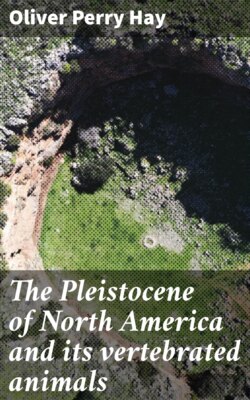Читать книгу The Pleistocene of North America and its vertebrated animals - Oliver Perry Hay - Страница 21
На сайте Литреса книга снята с продажи.
XVI. The Wisconsin Glacial Stage and the Wabash Beds.
ОглавлениеTable of Contents
The next stage which furnishes abundant vertebrate fossils is the Wisconsin. These remains are found most abundantly in the old soils and mucks which accumulated in the swamps, ponds, and lakes left on the uneven surface of the Wisconsin drift as the ice retired. To such deposits the writer has given the name Wabash beds. They are often called post-glacial deposits; but that term ought in strictness to be applied only to deposits of the present epoch. They may be called Late Glacial, but that expression has been used for the drift and moraines produced by the second half of the Wisconsin glaciation. It might be better to use for the divisions of the Wisconsin the terms Lower and Upper.
In the late Wisconsin, or the Wabash, deposits there may be found remains of any of the existing animals of the region; also often the bones and teeth of mammals now living in more northern regions. Besides these, there may occur the relics of animals which were able to endure the rigors, changes, and competitions of the Glacial period, but succumbed at its end. These are, especially, two species of elephants, one or two species of mastodons, four or more species of musk-oxen, the moose Cervalces, one or more species of peccary, and the giant beaver.
